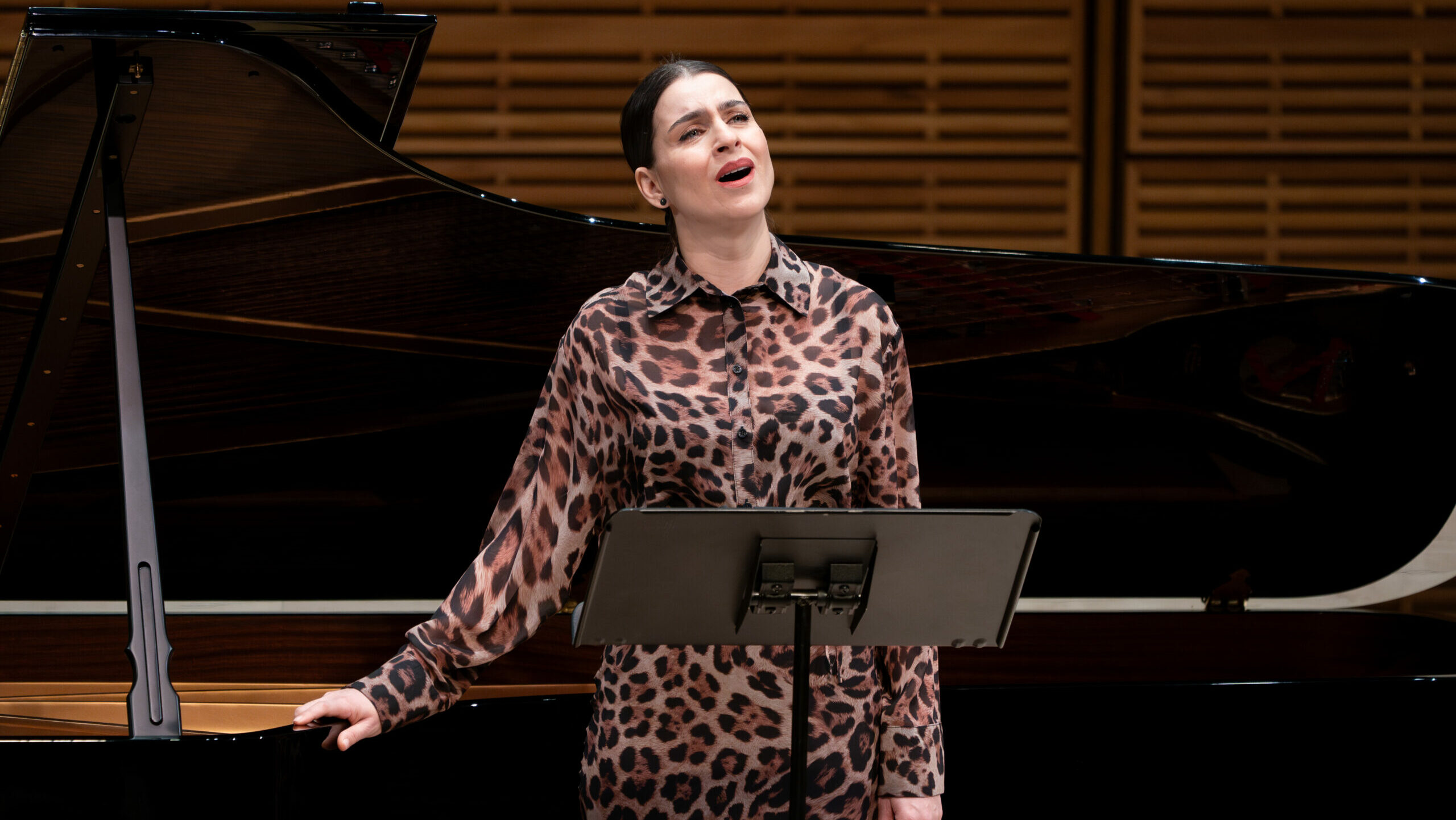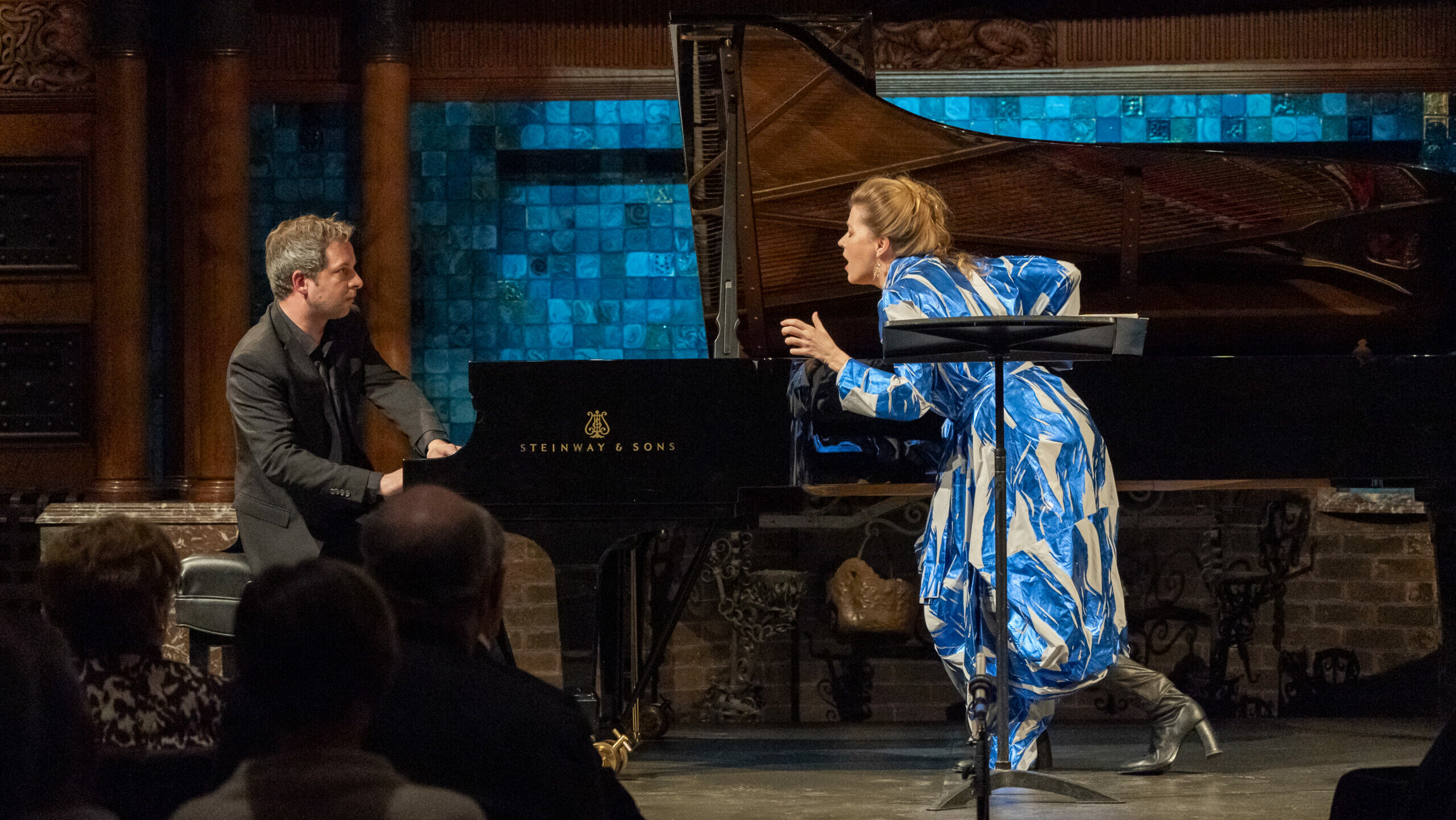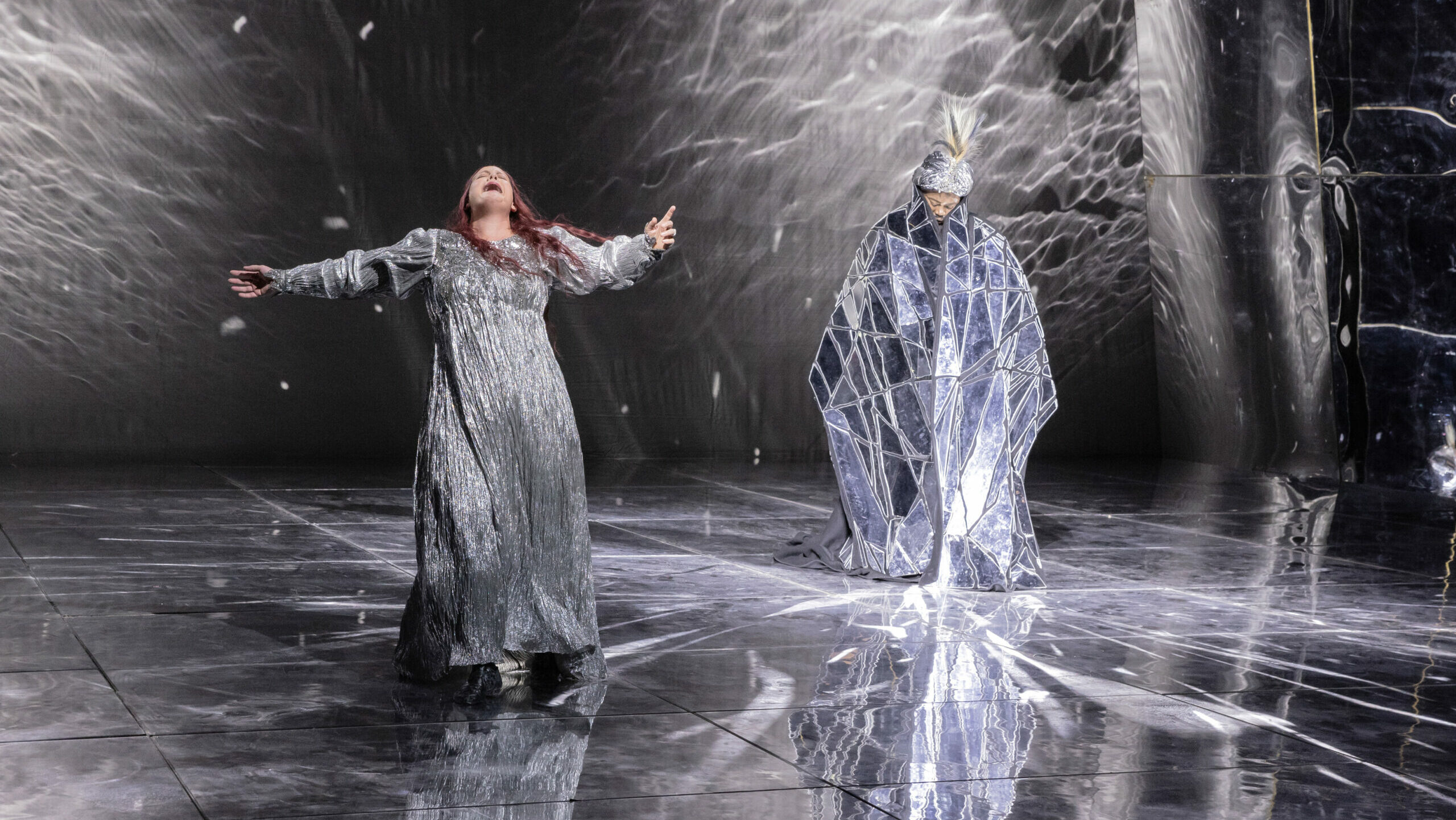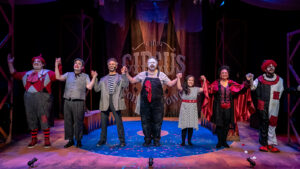

Savall and Christie, 80 and 77 respectively, stand as the two senior masters whose recordings and appearances have done the most over the past decades to build a healthy local enthusiasm for pre-Classical music. Other prominent septuagenarians like Trevor Pinnock, Philippe Herreweghe, Ton Koopman and René Jacobs also wield impressive discographies, but they have performed far less regularly in the US.
Though unmentioned by Woetzel, Savall had also been an important fixture in the early days of Juilliard’s Historical Performance program. Christie’s presence as an artist-in-residence though continues; on Thursday he led four singers and Juilliard 415 in Handel’s striking early Italian oratorio Il Trionfo del Tempo e del Disinganno.
For his Juilliard appearances over the years, Christie has returned often to the brilliant works Handel wrote his early 20s while in Italy. Nearly a decade ago, he first led Trionfo, followed in 2014 by Le Resurrezione, and then Aminta e Fillide in 2018.
Unlike Handel’s English oratorios, Trionfo features no dramatic action per se; it’s a philosophical debate about the transience of earthly beauty conducted by the allegorical figures of Beauty, Pleasure, Truth and Time. While the 2022 Trionfo frequently pleased, it struck me as the weakest of the four Christie-Handel-Juilliard concerts I’ve attended.
I don’t recall if the Trionfo in 2012 contained cuts but this year’s edition dropped a number of da capo repeats which proved jarring. Occasionally indulging in exaggerated dynamics, Christie’s conducting also verged on the mannered with some numbers particularly slow and others quite fast.
Despite its yearly rotation of student instrumentalists, J415 remains a consistently strong period-instrument ensemble although Handel’s demanding wind writing again provoked some occasional oboe mishaps. The continuo band of Chelsea Bernstein (its eloquent cellist), John Stajduhar, Dusan Balarin and Suren Barry was particularly adept.
Soloists from the Marcus Institute for Vocal Arts ranged from superb to miscast. Richard Pittsinger’s high tenor was challenged by Tempo’s wide-ranging music, his lowest notes nearly evaporating. His apparent discomfort perhaps led to his being the most score-bound. Maybe the role just wasn’t a good fit as his lively Damon is a pleasing feature of J415’s excerpts from Handel’s Acis and Galatea filmed without an audience last year.
Jasmin White’s first aria as Disinganno revealed an arresting mezzo and her coolly convincing arguments to Bellezza were consistently winning. “Più non cura,” her lilting aria accompanied by a pair of recorders, beguiled.
Perusing the singers’s biographies on the way home, I was startled to learn that Libby Sokolowski, the Piacere, is a soprano! Her repertoire includes Pamina and Rosalinde in Die Fledermaus, but throughout the evening she sounded quite like a mezzo to me, unsurprising as her role has been sung by Cecilia Bartoli and Ann Hallenberg. Although she bravely tackled Piacere’s stiff challenges. I was rarely convinced baroque music is a good fit for her, and the abridgements of “Lascia la spina” and “Come numbo que fugge col vento” suggested others agreed.
In 2012, Ying Fang’s dazzling Bellezza dominated the performance, and she has since gone onto successes across the street at the Metropolitan Opera where she will star in both Idomeneo and Don Giovanni next season. French soprano Julie Roset, this year’s Beauty, has already made significant appearances with several of the finest European Early Music ensembles including Christie’s Les Arts Florissants.
Though clearly under the weather–she must have wiped her nose (ever so discreetly) at least a dozen times during the concert—Roset sang with a endearingly stylish élan particularly when she added just a touch of vibrato to her girlishly vibrant tone. Her ravishing delivery of Bellezza’s concluding hushed aria of resignation “Tu del Ciel ministro elerto” gave notice to the enthusiastic audience that possibly an Early Music star had been born.
On Wednesday Savall and members of his instrumental band Le Concert des Nations held court in Zankel Hall with music of the French baroque which is usually thought of as a Christie specialty. But it should be remembered that Savall too played a surprising role in its popularization. December of last year marked the 30th anniversary of the release of Tous les Matins du Monde, a biopic of the viola da gamba virtuoso and composer Marin Marais starring both Gerard Depardieu and his late son Guillaume. Savall, long the world’s leading gambist, was prominently featured on the film’s magnificent best-selling soundtrack.
When I attended concerts during the 1990s by Savall’s Hesperion XX featuring his late wife, soprano Montserrat Figueras, he always played one or more of his viols. But for Tuesday’s all-Monteverdi concert at Stern, he primarily just conducted his vocal and instrumental forces, picking up his bow just once for an exquisite version of Monteverdi’s divine Lamento della Ninfa. Paola Valentina Molinari’s soprano throbbed with decorous emotion as the abandoned nymph but most arresting element was the stunning trio of male observers. They leaned so heavily into the devastating dissonances that I gasped for breath.
It and the preceding Combattimento di Tancredi e Clorinda were the best known of the seven selections offered from Monteverdi’s Madrigali guerrieri et amorosi. Savall’s choices and his powerful approach suggested that the vicissitudes of love are as violent and brutal as war’s. Most of the vocal works featured all seven vocalists from La Capella Reial de Catalunya, with standouts the plangent tenor Raffaele Giordani and bass Salvo Vitale who astonished with his wonderfully fluent coloratura.
Monteverdi veteran Furio Zanasi. whom I’d heard years ago in the title role of William Kentridge’s puppet production of Il Ritorno d’Ulisse in Patria, made a compelling Testo for the Combattimento. After listening for decades to recordings of Early Music star soprano Maria Cristina Kiehr, it was wonderful to finally catch her live, here soaring above the ensemble numbers and poignantly offering up Clorinda’s pathetic dying lines.
Savall’s elegantly patrician demeanor belied his fiercely dramatic approach which in most numbers was markedly slower than other interpretations I know. Perhaps his intensity caused the old instruments to need so much retuning. Andrew Lawrence-King, for many years the world’s master of the arpa doppia, actually delayed the concert’s start for minutes as he tuned his instrument’s many strings. Inevitably he won a round of applause as he finished his onerous task.
World events inevitably impinged on Savall’s otherwise early 17th century conjurations when he announced the group’s encore would be Arvo Pärt’s Da Pacem which proved both apt and quietly moving.
Photo of Jordi Savall: Richard Termine

























Comments